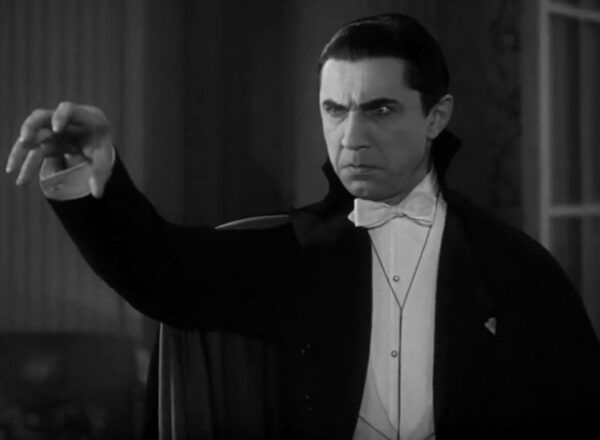Bram Stoker was 50 years old when British publisher Archibald Constable and Company put out a single volume edition of Dracula on this day in 1897. An established theater critic, Stoker had published one previous novel. Dracula was then published in serial form in the United States, and compiled into a single volume by Doubleday in 1899. It is an epistolary novel, told in letters, diary entries, and newspaper articles; reviews tended to either praise its terror or pan it for being too scary. It sold very well at the time and has continued to do so, never going out of print. It is in the public domain, and has been since 1962. Part of the novel’s lasting power has been its incorporation into popular culture. Not only have there been many adaptations, some more faithful than others, but the book has heavily influenced vampire lore and helped to establish the “rules,” affecting nearly all vampire stories in all formats since. (Probably not Twilight.) It is arguably the single most famous epistolary novel, and that format has allowed it to be distributed as a newsletter: Dracula Daily is probably the most delightful thing on the internet right now. If you want more, check out our vampires archive, including posts on why Carmilla is better than Dracula, who the inspiration for Count Dracula might have been, and what the future of vampire fiction might look like. Nosferatu is the oldest surviving adaptation of Dracula, but it shouldn’t be; the unauthorized movie, which changed Dracula’s name to Count Orlok, was the target of a copyright lawsuit from the Stoker estate, who won. All copies were ordered destroyed, but a few copies survived, and it is now in the public domain. Lugosi played the role on stage and revisited it in the first of the Universal Studios monster movies, 1931’s Dracula. (A Spanish-language version of Dracula was filmed simultaneously on the same sets and released in Mexico; it is worth watching!) Nearly every characteristic of Dracula’s speech and mannerisms that we now consider canon comes from Lugosi’s performance. The Hungarian-born actor made choices he couldn’t possibly have known would resonate 91 years later, but resonate they do. Universal made several sequels and some crossovers with Frankenstein and other monsters in their stable, not to mention a famed meeting with Abbot and Costello. Lee played the role in the Hammer Films adaptation (1958) and its sequels, with his dear friend Peter Cushing taking the part of Van Helsing. The series ran for 14 years, ending with Dracula A.D. 1972, a strange fever dream set in (then) modern times. In recent years, the only notable adaptations are sequels and reimaginings — which is fine! My favorite is probably the wacky Dracula 2000, set in modern day, which creates a backstory featuring Judas Iscariot. The last decade has brought us two TV versions, one American and one a miniseries that was a British-American co-production. A feature, The Last Voyage of the Demeter, based on the ship’s log in the novel, is in production. Dracula has also shown up as a character in non-adaptation/parody movies and TV series. For example, he was in the season 5 premiere of Buffy the Vampire Slayer, “Buffy vs. Dracula,” despite the Dracula mythos not matching the Buffy mythos at all. He is also a character in The Monster Squad, appears on The Grim Adventures of Billy and Mandy, is on episodes of The Simpsons and Aqua Team Hunger Force, and has famous daughters in both Hotel Transylvania and Monster High (a Mattel series of toys that spawned several animated movies). Vampire Hunter D was a hugely popular Japanese light novel series in the 1990s and spawned an anime. Mina Murray is a main character in The League of Extraordinary Gentlemen (which was adapted as a movie, but the less said about that, the better). A Dowry of Blood is a queer retelling by S.T. Gibson about Dracula’s brides. Anno Dracula is the first in a series of doorstopper novels by Kim Newman that incorporate not just Dracula but a wide assortment of literary and real-life characters throughout time, following the Count’s immortal adventures. The Route of Salt and Ice is a queer retelling of the voyage of the Demeter. But perhaps the very first retelling of Dracula was the Icelandic translation, titled Powers of Darkness and written by Valdimar Ásmundsson, who took…liberties. Community season 2, episode 6 “Epidemiology”



